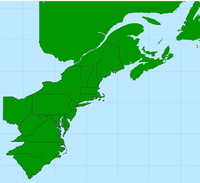National Oceanic and Atmospheric Administration
|
NOAA's reach goes from the surface of the sun to the depths of the ocean floor as the agency works to keep citizens informed of the changing environment around them. From daily weather forecasts, severe storm warnings and climate monitoring to fisheries management, coastal restoration and supporting marine commerce, NOAA’s products and services support economic vitality and affect more than one-third of America’s gross domestic product. ... |
|
News
|
Resources
NEclimateUS.org (a.k.a. 'neXus') is a searchable online database that provides a gateway to climate information for the Eastern US. It summarizes needs for climate information as articulated in publications; identifies available data, products and services; and captures planned and on-going projects. The goal is to offer a tool to search for regionally relevant climate information, and to facilitate collaborative opportunities across the network of climate-focused programs and partners in the Eastern US. Climate Watch |


 Find
Find 



















